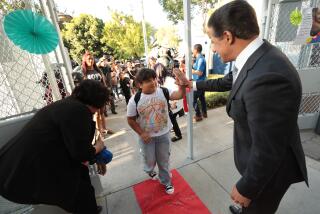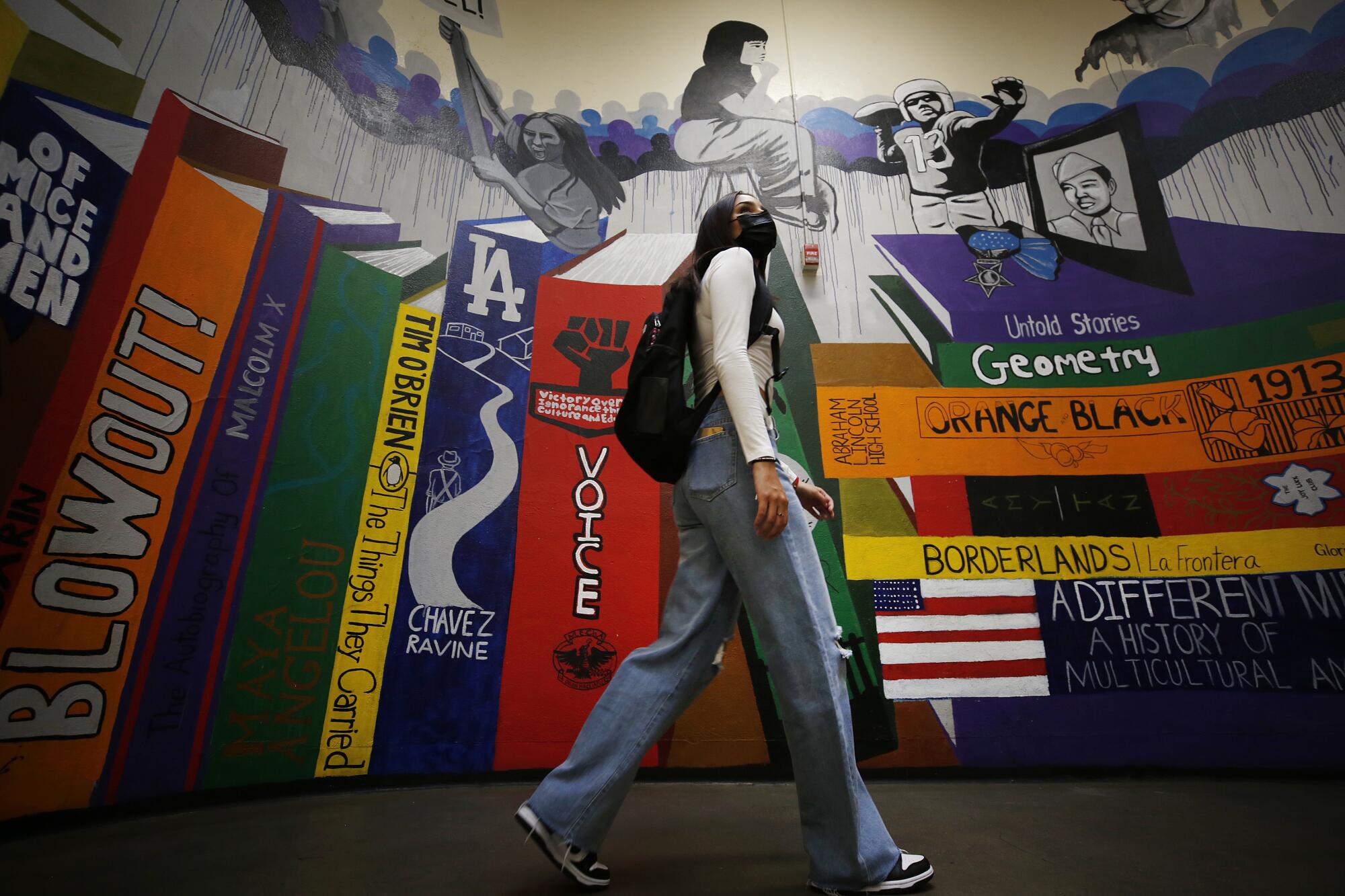
- Share via
Skyla Fuentes, a junior at Mendez High School in Boyle Heights, is intent on becoming a lawyer — she dreams of attending UC San Diego and then Pepperdine for law school.
But during the fall of her sophomore year, she and her grandparents fell ill with COVID-19. For weeks, she lay next to her grandfather soothing him as he struggled to breathe, praying for him not to die. It became hard just to wake up in the morning, and she often missed her online classes. She went from earning A’s and Bs to failing all of her subjects.
When the Los Angeles Unified School District offered extra time to improve grades, Skyla worked for days to complete her assignments, telling herself: “I have to do it for my family” and her teachers who were “putting up a fight for us.” She ended up with straight A’s.
Now back at school, she is again having a hard time keeping up with the demands of a rigorous schedule that includes pre-calculus and AP English.
“I honestly don’t feel like I’m prepared,” she said. “Because of that two-year gap we had of not being on campus, I feel I lost a lot of my knowledge I had back then,” she said.
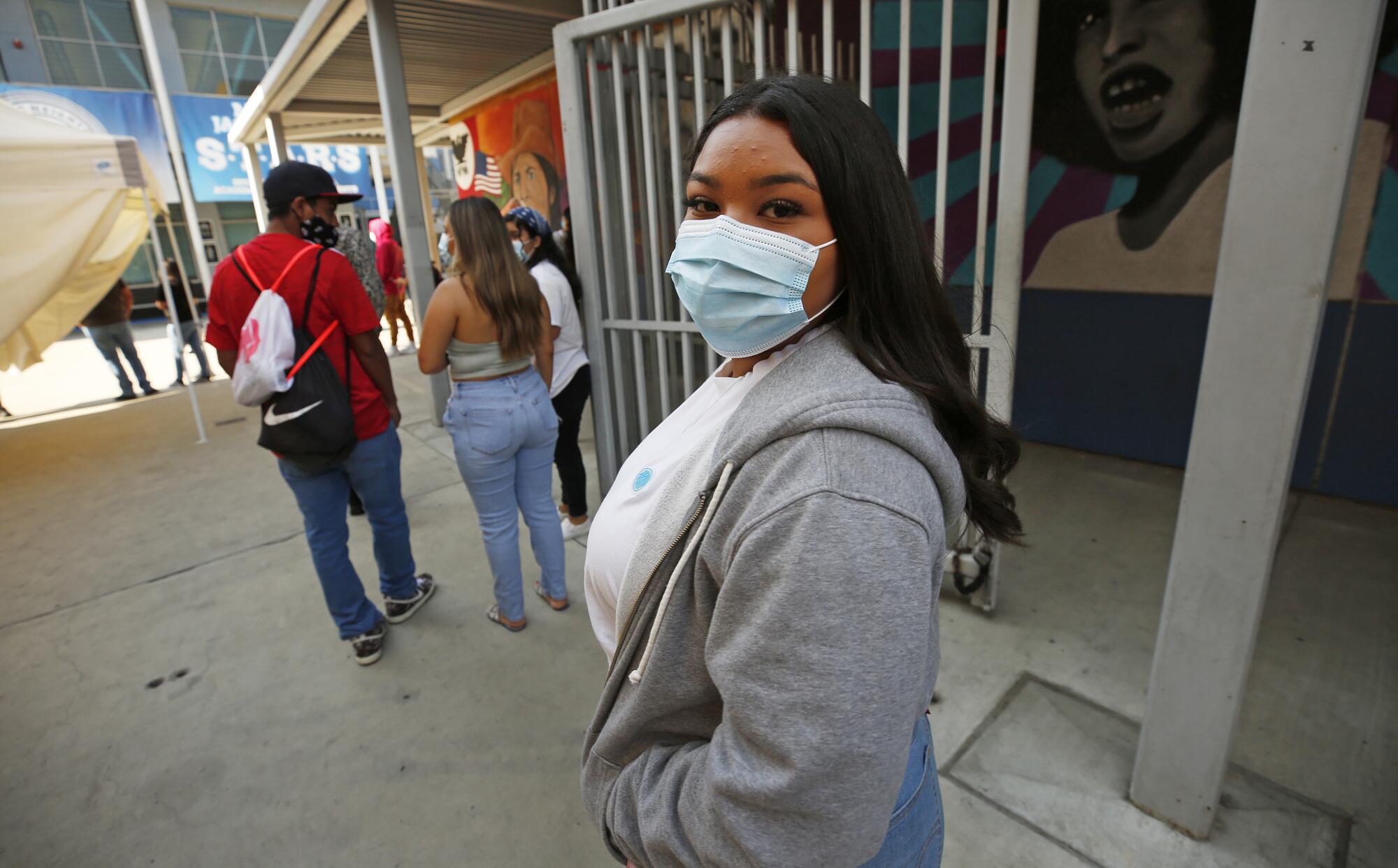
For months, educators have been warning about the devastating effects the pandemic and school closures would have on student academic progress. But a first-of-its-kind Los Angeles Times analysis of data offers a particularly alarming assessment of the impact on L.A. students, showing deep drops in assessment scores or below grade-level standing in key areas of learning. Black, Latino and other vulnerable children have been particularly hard hit.
The analysis showed:
- The gap in grades that existed before the pandemic between Black and Latino students and white and Asian counterparts widened to as much as 21 percentage points.
- Elementary school reading scores dropped 7 percentage points overall, while gaps between Black and Latino students and white and Asian classmates grew to 26 percentage points or more.
- More than 200,000 students are not meeting grade-level goals in math and reading.
The analysis highlights the challenges ahead for L.A. educators as students are back in classrooms facing unprecedented needs.
“We have to fix it,” school board member Tanya Ortiz Franklin said. “The opportunities available to students that have been most historically marginalized by systems of power are exactly what we have to be focused on.”
But, Ortiz Franklin added, the system is stressed.
“We could be on that cusp of closing these opportunity gaps for kids if all we had to do was focus on instruction, but because we also have to focus on the pandemic and operations, it’s a real challenge to be able to do both at the same time and do both well,” she said.
For Skyla, the toll of the pandemic still feels heavy. But she is set on continuing to make strides so she isn’t behind when her senior year comes around.
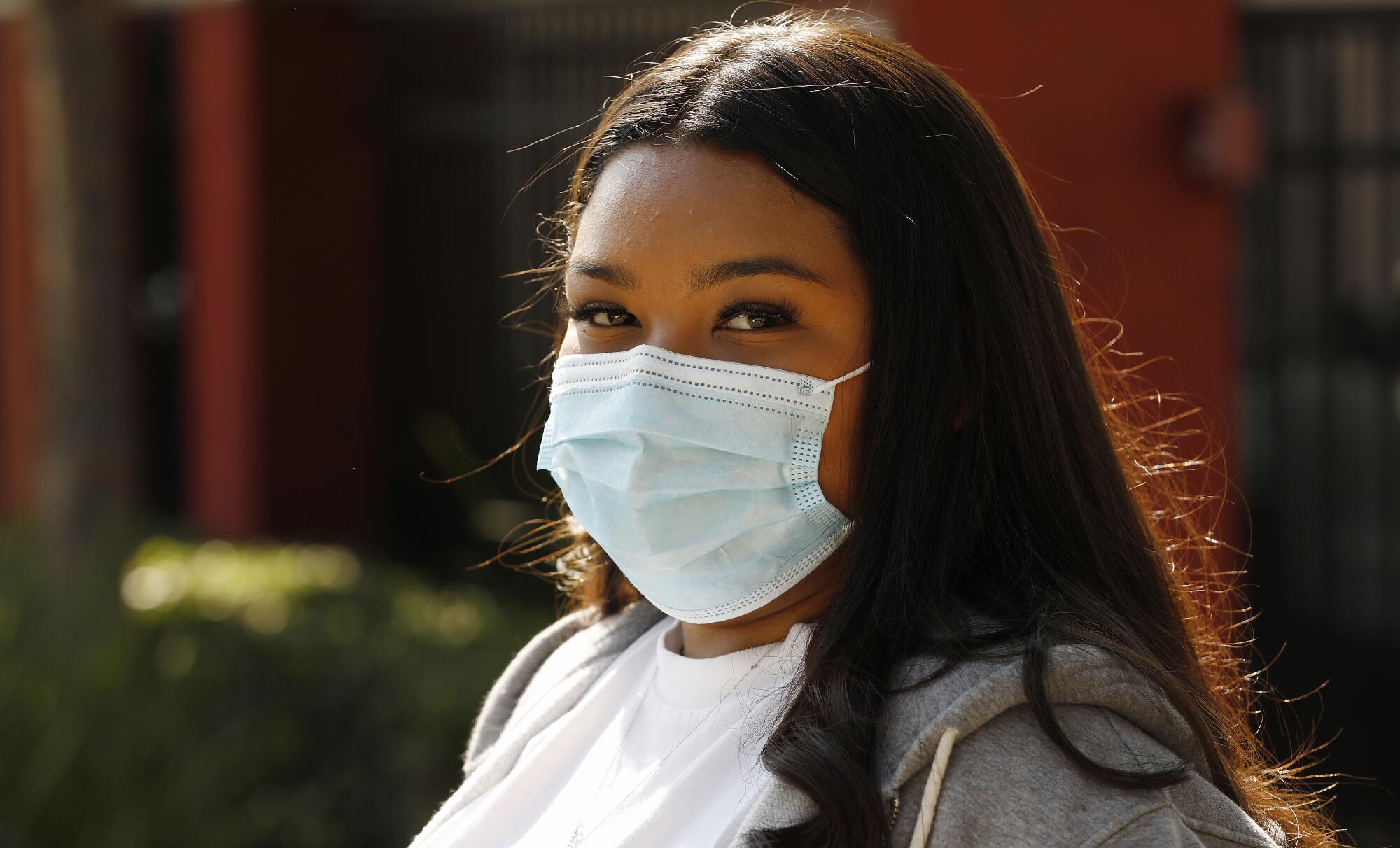
“It’s my second to last year,” she said. “I just have to stay focused.”
◆
The massive educational recovery effort underway in the nation’s second largest school district follows a year and a half of unprecedented upheaval.
When schools shut their doors, the district struggled to close a massive digital divide and pivot to online learning while families in some of the poorest areas of the city faced life-and-death coronavirus hardships that were among the worst in the nation.
Focusing on safety, the district was slower to reopen schools compared with others and took limited advantage of state rules allowing it to bring vulnerable students back on campus. For months, it required fewer minutes of live online instruction than many other school systems, an agreement forged with the teachers union to provide flexibility for all during the pandemic emergency.
When the district began reopening schools in April, in-person attendance was low — especially in secondary schools, where students were limited to taking online classes from campus.
The Times examined data beginning with the pre-pandemic 2018-19 school year through spring 2021, along with preliminary fall assessment data.
Those assessments include the Renaissance Star reading and math tests for secondary students and the Dibels and Edulastic tests for elementary reading and math benchmarks. District officials rely on the testing data to anticipate whether students are on track to mastering reading and math skills or are in need of extra help.
“What we’re interested in, even if it’s data that doesn’t look as promising as we would like, is to know that it’s predictive and that we have months ahead of us to change the trajectory of that data,” Alison Yoshimoto-Towery, the district’s chief academic officer, said during a recent board meeting. “We have a steep climb to catch up to the end of the year, but we’d rather know now.”
Grades
Across all ethnicities, grades declined as students who had previously earned A’s, Bs and Cs began getting report cards marked with Ds and Fs.
But students who were further behind before the pandemic saw bigger declines.
For example, the percentage of A’s, Bs, and Cs earned by Latino students in the spring of 2021 fell by more than 10 percentage points compared with the pre-pandemic fall of 2019 — from about 79% to 68%. English learners saw a drop of 12 percentage points, from 70% to 58%.
White and Asian students also saw grades drop but at about half the rate of Latinos. For Asian students that means the percentage of A’s, Bs and Cs went from 94% in the fall of 2019 to 90% by the spring of 2021. For white students it went from 89% to 84%.
For Black students, the drop was about 6 percentage points. About 76% of grades earned in the fall of 2019 were A’s, Bs and Cs, compared with 70% in the spring of 2021.
District officials recently directed teachers to continue giving students earning Ds and Fs additional opportunities to improve their grades, saying traditional grading policies “inadvertently perpetuate achievement and opportunity gaps.”
Reading
About 180,000 L.A. Unified students who were tested during the 2020-21 academic year did not meet grade-level reading goals, with data worsening during the pandemic, assessments show.
The Dibels 8 assessment was given to nearly 90% of elementary students at various points in the school year, starting several months before school closures and continuing through the 2020-21 academic year. The assessment helps teachers understand how well students are acquiring literacy skills and whether they might need extra help.
In the elementary grades, in the months before schools closed during the 2019-20 school year, about 56% of all LAUSD students met grade-level reading goals. When they were assessed midway through the 2020-21 school year — which unfolded almost entirely online — about 49% were meeting benchmarks.
For Black and Latino elementary students, who make up 81% of all L.A. Unified students, about half met grade-level goals before the pandemic. When they were assessed midway through the 2020-21 school year, that rate had fallen an additional 6 and 8 percentage points, respectively.
In raw numbers, the 2020-21 rates represent more than 100,000 elementary school students who do not meet grade-level goals in reading.
White and Asian students, who before the pandemic were significantly more likely to meet grade-level goals, saw only incremental drops or had results remain largely flat during school closures.
The district released preliminary results of Dibels reading assessments for the fall of the current school year late last month. A little more than half of all students had been tested by Sept. 21 and the early trend showed similar numbers, with a further drop in the overall rate of students meeting grade-level goals.
For middle and high school students, who were assessed using the Renaissance Star Reading test, the numbers were even starker.
About 70% of Black and Latino students were below grade level and likely in need of intervention.
The majority of white and Asian students, meanwhile, were either at or above grade level.
The test was administered to just over half of all secondary students during the 2020-21 school year. However, comparative pre-pandemic data are not available because the test was newly adopted to meet state requirements for assessing students during the pandemic.
Math
Math assessments also showed hundreds of thousands of students not meeting grade-level goals.
The Edulastic math test was given to nearly 90% of elementary students during periods starting in the 2020-21 school year when instruction was mostly online. It was also adopted by the district to meet state requirements for assessing students when other standardized tests were canceled. Because of that, pre-pandemic comparisons are not possible.
At the elementary school level, about 21% of all students who were assessed toward the end of the 2020-21 school year were meeting grade-level goals.
For Black and Latino students, it was fewer than 18%, compared with about 43% of Asian students and 34% of white students.
In the middle and high school ranks, more than 75% of Black and Latino students who took the Renaissance Star Math test at the end of the 2020-21 school year were below grade level and likely needing intervention.
The majority of white and Asian students were either at or above grade level.
Again, comparative pre-pandemic data for elementary and high school students is not available.
College pathways
During the 2018-19 school year, about 59% of students met University of California and California State University admissions requirements. For the class of 2022, about 46% of students are on track to meet the requirements — with a gap of 17 percentage points or more between Black and Latino students and white and Asian students. Officials said they expect more seniors will meet the requirements before the end of the year.
Education experts caution that assessments and grades don’t paint a full picture of student abilities. Some parents and the Los Angeles teachers union opposed what they describe as an overassessment of children during the pandemic, saying teachers should concentrate on instruction, not testing.
Others say its vital to use the data to understand how to help students.
“Our kids cannot afford to lose another year because we do not know where they are starting from,” said Ana Ponce, executive director of the local advocacy group Great Public Schools Now. “Some of our students are going to need more support to get back on track than other students. And we can only know the true impacts through the data.”
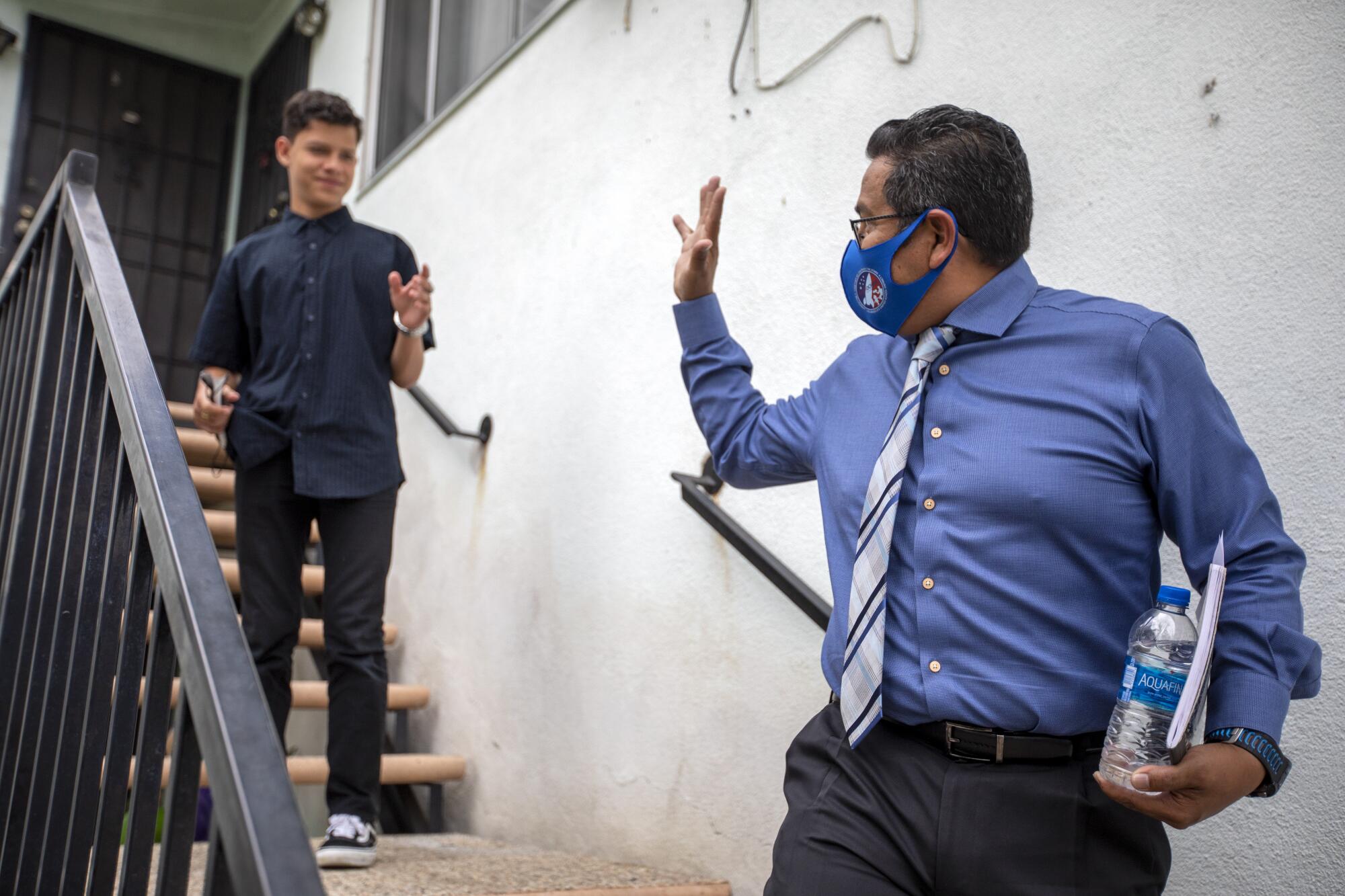
An opportunity for change
Even before students returned to campus in August, Principal Marcos Hernandez of the Ellen Ochoa Learning Center, a K-8 school in Bell, made it a point to visit with three families a day.
At least eight of his 1,300 students lost a parent during the pandemic. Almost all of the school’s students are Latino and come from low income families, and they are struggling like never before.
The school’s goal now — as it is districtwide — is to “accelerate learning” rather than remediate, Hernandez said. That is, teachers should continue teaching the standards for their grade level, addressing what was missed in previous grades when it’s necessary to complete the grade-level work.
The approach is aimed at preventing students from falling even further behind.
“That’s what gives them equity,” Hernandez said. But, he added, it’s not going to be easy.
“In some ways, this is going to be harder than shutting down,” he said.
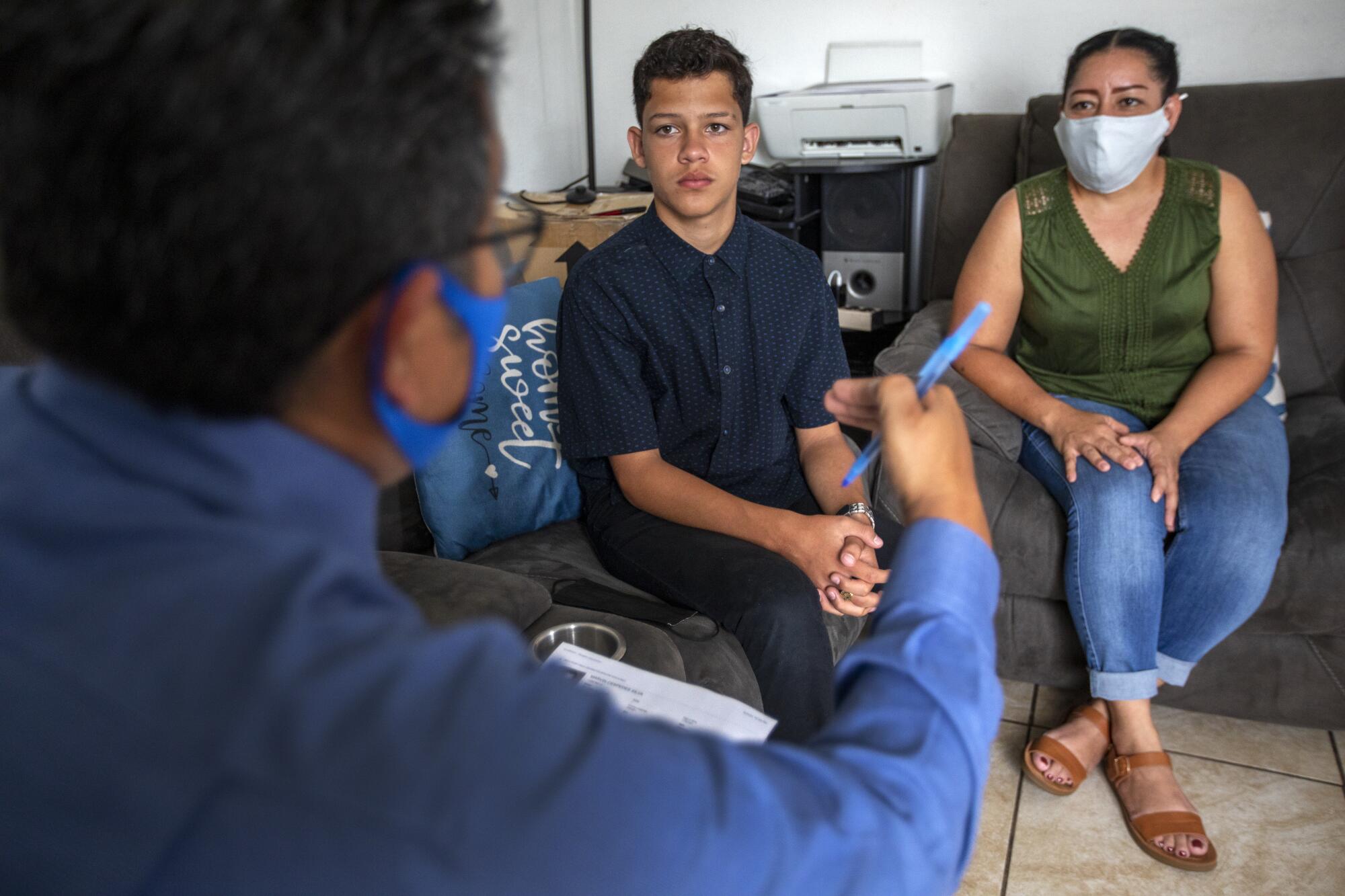
“We have to have our students master the standards for where they’re coming in and they have to get this extra support at the same time,” Hernandez said. “That’s the challenge, right?”
With a supplemental budget this year that is about double what it was in previous years, he says money is not the obstacle.
“I cannot tell you that I did not have the money to do what I needed to do for my students to succeed,” he said.
But educators are still feeling the pressure. In addition to trying to bring students up academically, school officials are also tasked with overseeing elaborate and time-consuming safety protocols.
“We have to manage all the cases, contact tracing, testing ... screening, sanitizing and on and on. And we’re vaccinating staff and vaccinating students,” he said.
At the same time, he added, “we have to have an aggressive instructional plan that we put forward for our students.”
“We can’t get to the end of the year and say, ‘Yes, we were able to test and vaccinate and we still have this gap for our students,’” Hernandez said. “We have to get to the end of the year and say, ‘Yes, we kept them safe but also look at how much they grew academically.’ That has to be our imperative.”
The district has benefited from a record $20-billion budget this year, which includes billions in COVID-19 relief funds.
As part of its efforts to address learning gaps, it allocated $125 million to help boost Black student achievement, a portion of which will be used to offer additional support and intervention aimed at closing reading and math academic gaps. And it has also allocated hundreds of millions to help boost high-needs schools.
It has also committed $45 million for tutoring, which some education experts have increasingly emphasized is particularly effective at helping underserved students catch up — when it’s done by well-qualified educators who regularly work one-on-one or with small groups of students.
LAUSD officials said they do not have districtwide data on the number of students currently receiving tutoring because the programs are being managed at the school level.
Officials have also committed $300 million to the district’s Primary Promise math and literacy intervention programs, which offer small groups of three to five students 30 minutes of daily intervention. A pilot reading program offered last year led to large gains in reading proficiency, district officials said.
Schools with higher percentages of students not meeting grade-level benchmarks were given more money to hire intervention teachers.
“We’re actually doubling down,” said Yoshimoto-Towery. “We’re not giving every elementary school a reading teacher. We’re giving some schools two. And some schools two reading teachers and a math teacher. And all of that’s focused on not getting the same kind of data we’ve had pre-pandemic.”
“I do think that we owe it to the students and communities who historically have been underserved, and we need to think and work and reach out differently,” she added.
Even with an abundance of money, the district has so far been hampered by a statewide teacher shortage and is trying to fill more than 600 teaching vacancies — nearly half of which are in its high- and highest-needs schools. The Primary Promise program has hundreds of teacher vacancies.
Miguel Dominguez, of the advocacy group Community Coalition, said he is encouraged by some of the steps the district has taken — such as allocating additional funds to schools with the highest needs — but is still waiting to see whether the actions will go far enough to significantly raise achievement.
“We have a very historic opportunity,” Dominguez said. “And it’s really not about thinking how do we get back to normal, but how do we do better? If we had made these equity decisions pre-COVID, then a lot of families would not have been in the situations they were in.”
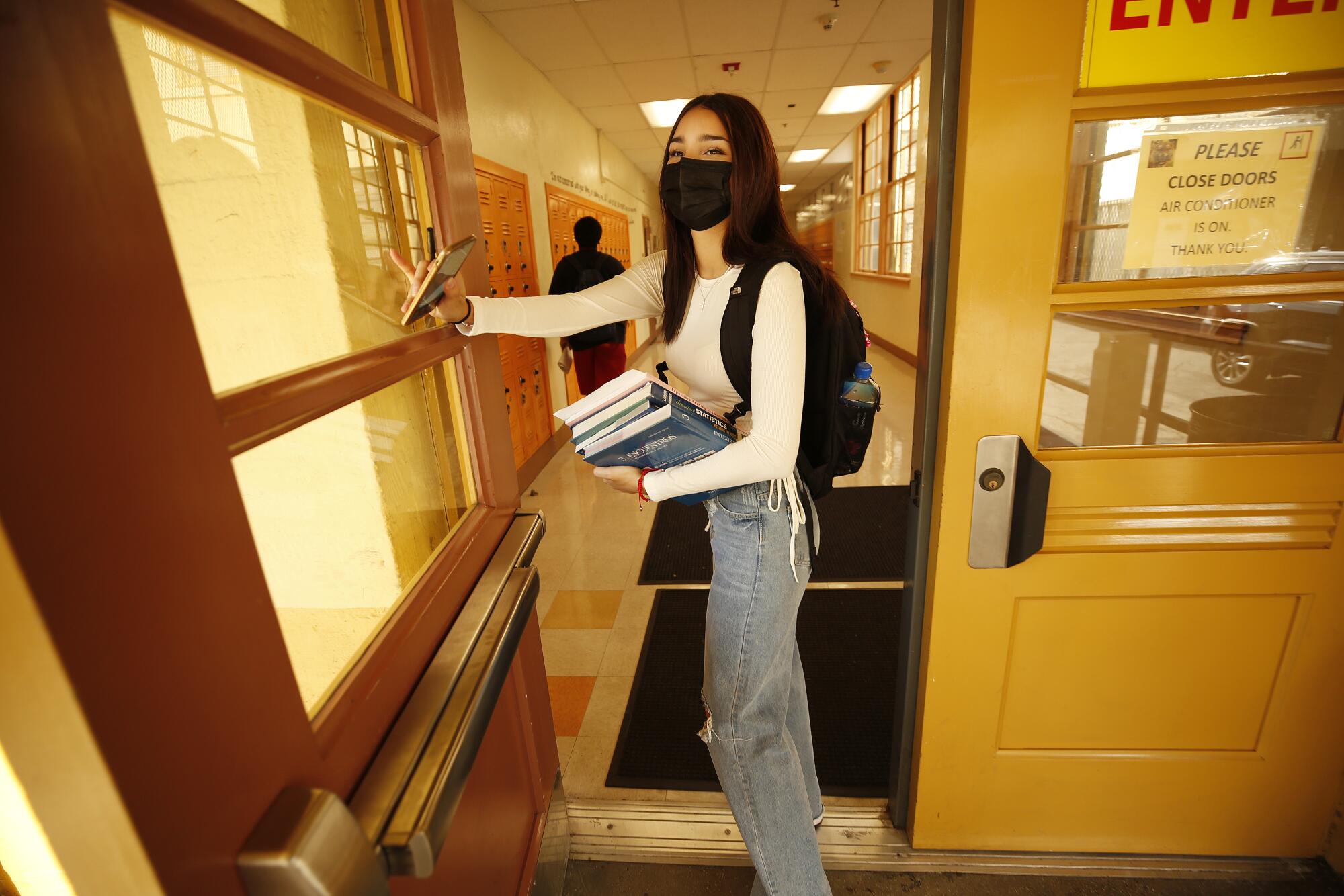
For students like Tristan Gamboa, 17, doing better is a priority this fall. A senior with dreams of attending a Cal State university, she has been furiously working to make up for grades that dropped during school closures.
Tristan finished her junior year of remote learning with a 1.6 GPA. This summer, she signed up for two in-person classes and thrived, getting A’s in both.
Now she’s back on campus for her senior year at Lincoln High School in Lincoln Heights, determined to keep improving her GPA in time for college. But it’s a heavy lift with just a couple of months left in the semester.
“I’ve never seen this much work,” she said.
Ada Mendoza is among the many parents who are anxious and say their children are in urgent need of help. Her now 8-year-old son was excelling in first grade when schools closed their doors.
Now he is in third grade — a time when educators say it’s crucial for students to become proficient readers — and Mendoza sees the deep void in his learning.
“I put him down to write and he doesn’t remember his letters,” she said. “I ask him to read and he says he can’t remember how.
“We need help now,” she said.
More to Read
Sign up for Essential California
The most important California stories and recommendations in your inbox every morning.
You may occasionally receive promotional content from the Los Angeles Times.



